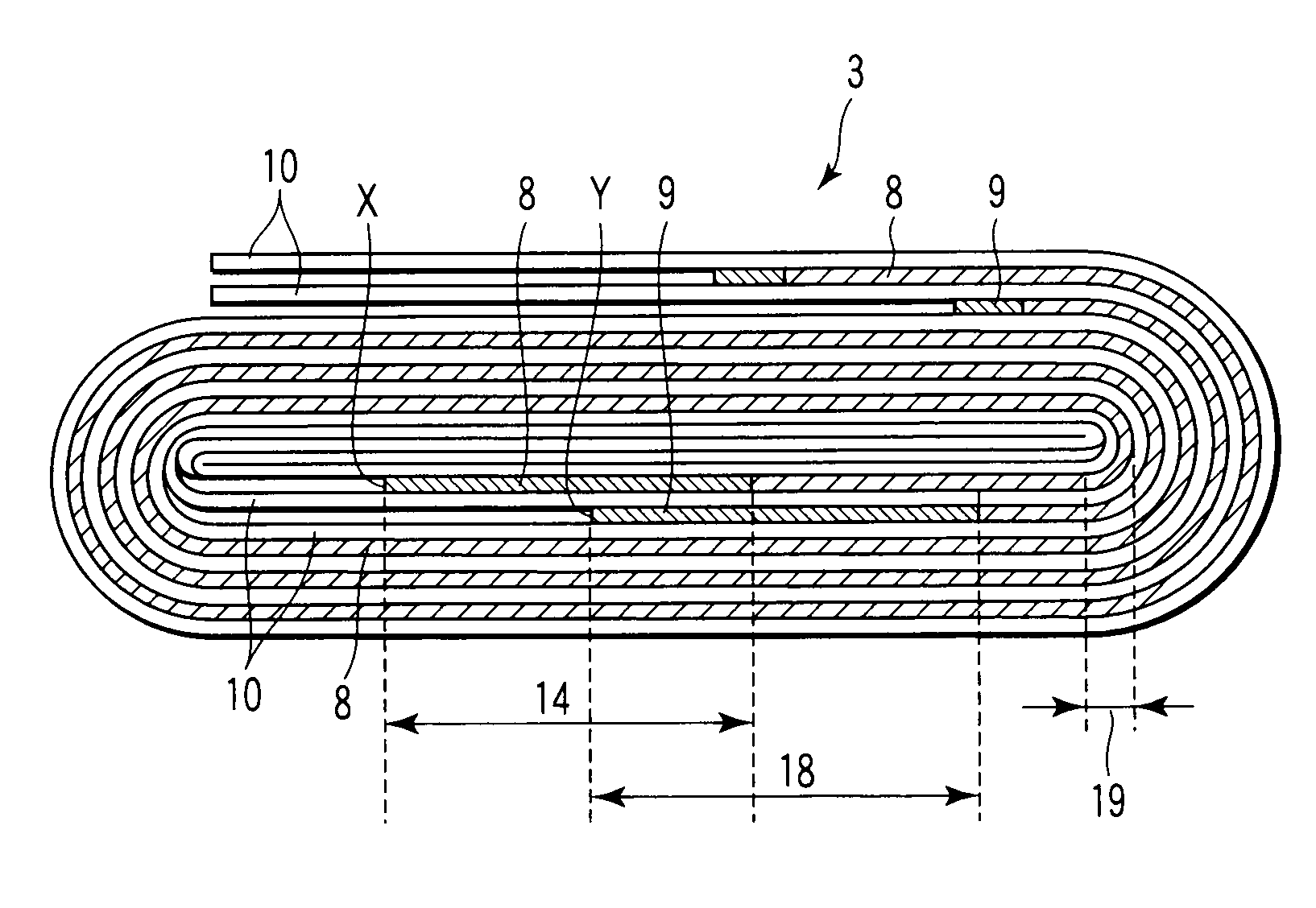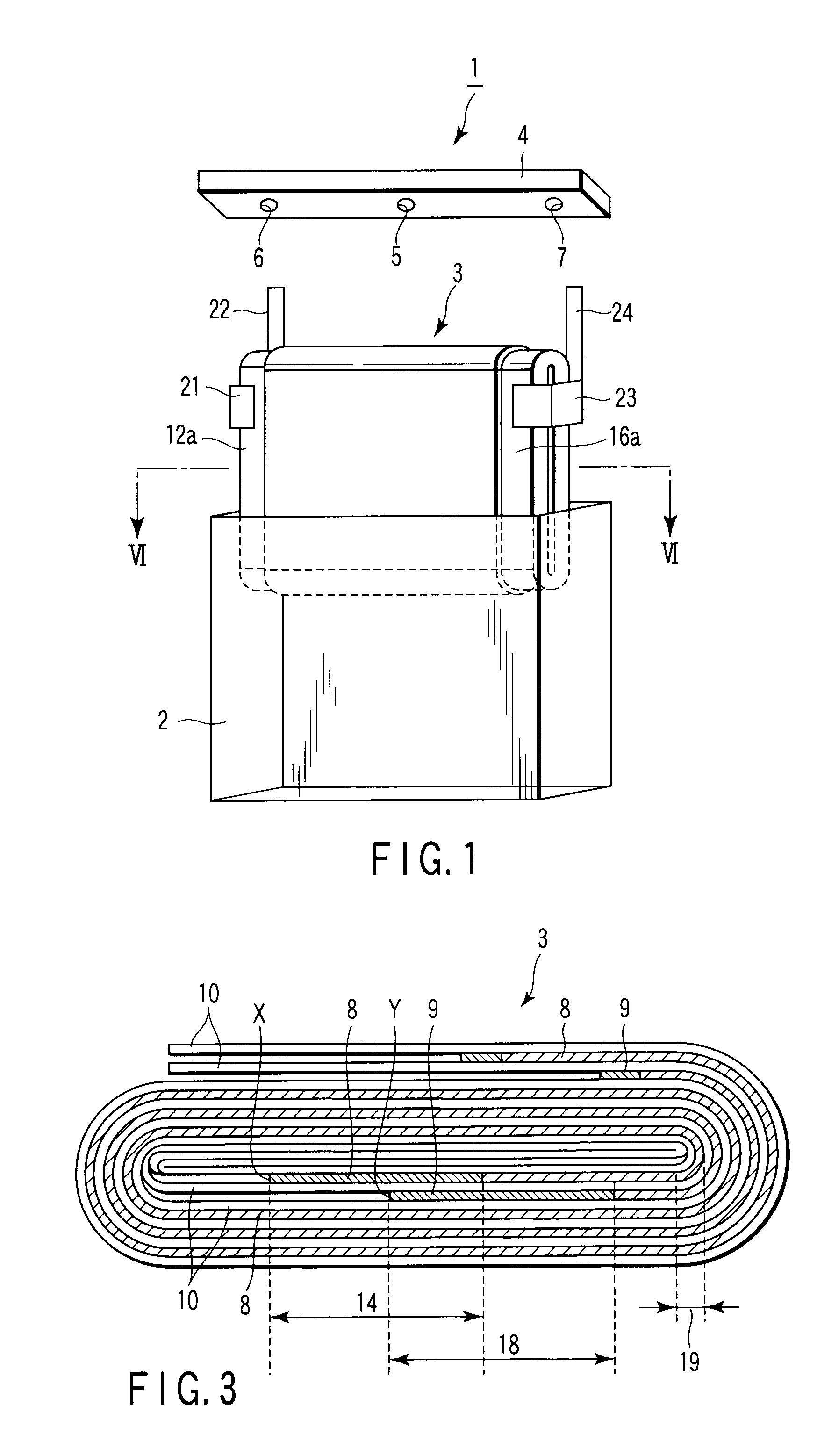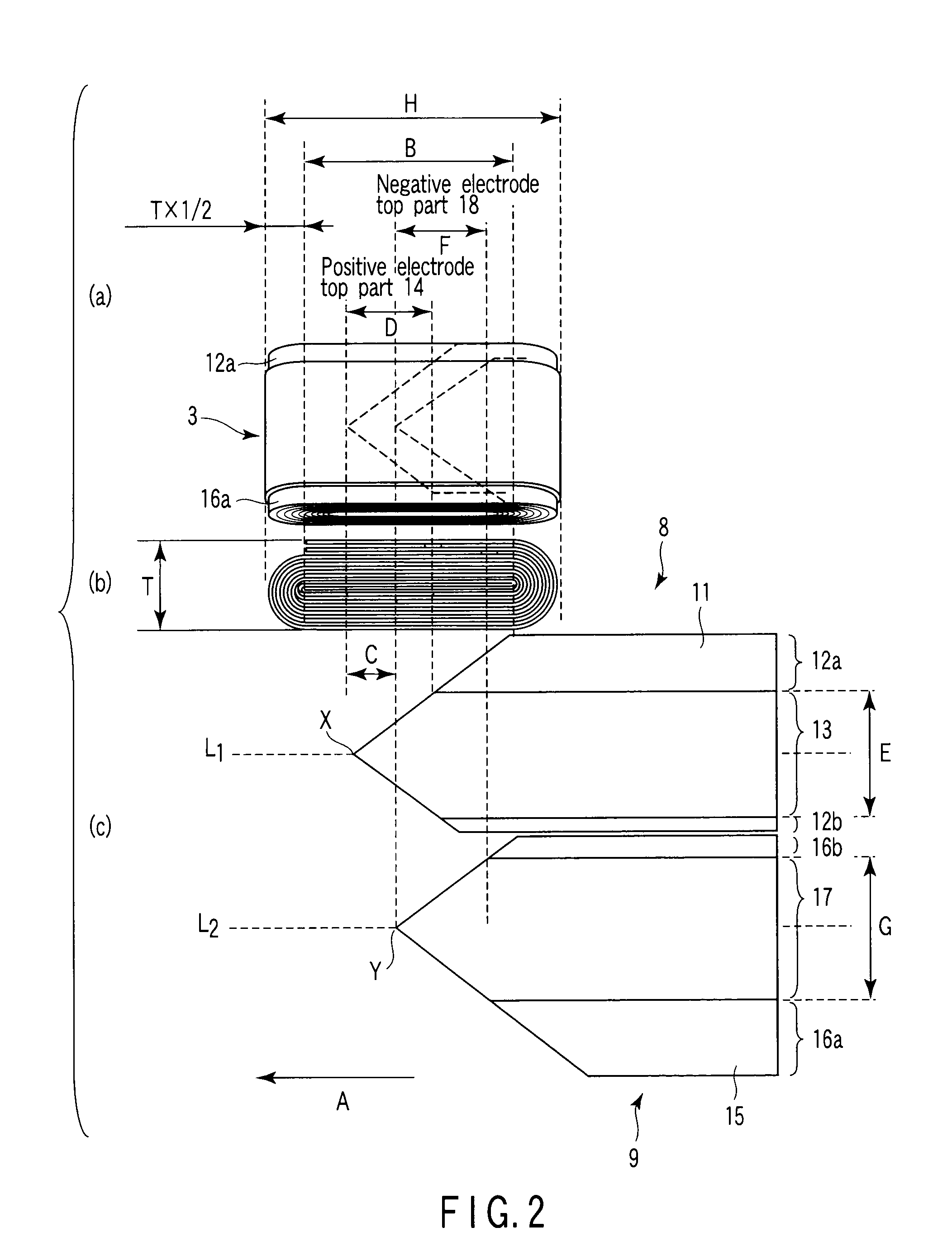Nonaqueous electrolyte battery, battery pack and vehicle
a technology of nonaqueous electrolyte and battery pack, which is applied in the direction of hybrid vehicles, wound/folded electrode electrodes, sustainable manufacturing/processing, etc., can solve the problems of prolonging and redundancy of the penetration process of the electrolytic solution, affecting the performance of the battery, and affecting the ability to retain an electrolytic solution
- Summary
- Abstract
- Description
- Claims
- Application Information
AI Technical Summary
Benefits of technology
Problems solved by technology
Method used
Image
Examples
first embodiment
[0043]A nonaqueous electrolyte battery according to a first embodiment will be explained with reference to FIGS. 1 to 5. FIG. 1 is an exploded perspective view of the nonaqueous electrolyte battery according to the first embodiment. FIG. 2(a) is a typical plan view of an electrode group used in the nonaqueous electrolyte battery, FIG. 2(b) is a typical top plan view of the electrode group and FIG. 2(c) is a typical view showing the positional relationship between the ends of positive and negative electrodes in the electrode group. FIG. 3 is an enlarged top plan view of the electrode group shown in FIG. 2(b). FIG. 4 is a typical view for explaining a process of producing the electrode group used in the nonaqueous electrolyte battery of FIG. 1. FIG. 5(a) is a plan view of the center part of the positive and negative electrodes used in the nonaqueous electrolyte battery of FIG. 1 and FIG. 5(b) is a perspective view of the center part of the positive and negative electrodes of FIG. 5(a)...
second embodiment
[0114]A battery pack according to a second embodiment comprises the nonaqueous electrolyte battery according to the first embodiment. The number of the nonaqueous electrolyte batteries may be two or more. It is preferable that the nonaqueous electrolyte battery according to the first embodiment be used as a unit cell and unit cells be arranged electrically in series or in parallel to constitute a battery module.
[0115]The nonaqueous electrolyte battery according to the first embodiment is suitable for use as a battery module and the battery pack according to the second embodiment is superior in output performance and cycle performance. The reason for this will be explained.
[0116]When the negative electrode is improved in impregnation ability with the nonaqueous electrolyte, it becomes resistant to overvoltage. As a result, the utilization factor of the negative electrode active material can be equalized because the negative electrode can be prevented from being locally overcharged or...
third embodiment
[0128]A vehicle according to a third embodiment comprises the battery pack according to the second embodiment, and is therefore superior in keeping the performance of the drive source. Examples of the vehicles here include two- to four-wheel hybrid electric cars, two- to four-wheel electric cars and power-assisted bicycles.
[0129]FIGS. 11 to 13 show various type of hybrid vehicles in which an internal combustion engine and a motor driven by a battery pack are used in combination as the power source for the driving. The hybrid vehicle can be roughly classified into three types depending on the combination of the internal combustion engine and the electric motor.
[0130]FIG. 11 shows a hybrid vehicle 50 that is generally called a series hybrid vehicle. The motive power of an internal combustion engine 51 is once converted entirely into an electric power by a power generator 52, and the electric power thus converted is stored in a battery pack 54 via an inverter 53. The battery pack accor...
PUM
| Property | Measurement | Unit |
|---|---|---|
| thickness | aaaaa | aaaaa |
| specific surface area | aaaaa | aaaaa |
| thickness | aaaaa | aaaaa |
Abstract
Description
Claims
Application Information
 Login to View More
Login to View More - R&D
- Intellectual Property
- Life Sciences
- Materials
- Tech Scout
- Unparalleled Data Quality
- Higher Quality Content
- 60% Fewer Hallucinations
Browse by: Latest US Patents, China's latest patents, Technical Efficacy Thesaurus, Application Domain, Technology Topic, Popular Technical Reports.
© 2025 PatSnap. All rights reserved.Legal|Privacy policy|Modern Slavery Act Transparency Statement|Sitemap|About US| Contact US: help@patsnap.com



